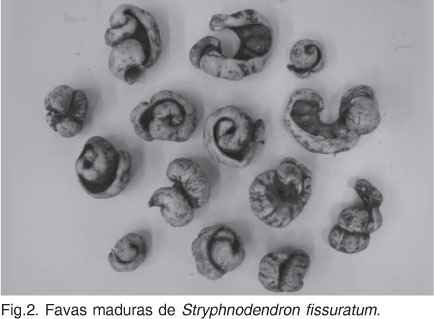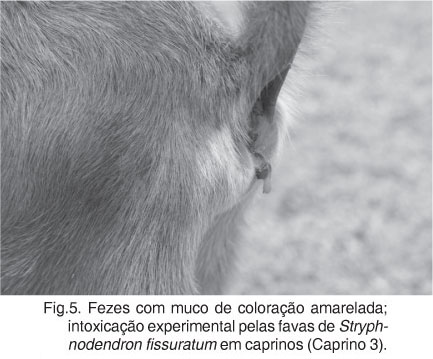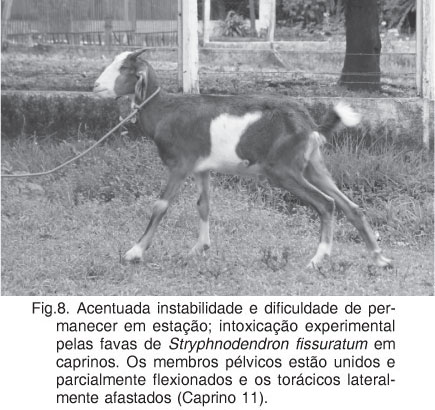In order to confirm the susceptibility of goats to the poisoning by Stryphnodendron fissuratum Mart. (Leg. Mimosoideae) and to characterize the clinical disease, the pods of the plant were given orally to each of eight young goats and in fractioned doses to other two. The lowest lethal dose was 10g/kg. The same dose was the lowest that induced disease. Doses of 20g/kg and 40g/kg caused pronounced clinical signs and doses of 5g/kg did not caused signs. Fractioned doses of 5g/kg during four days also caused pronounced signs. In each groups the first signs of poisoning were observed from the first day of experiments and the changes ranged from 4-25 days. The disease was characterized mainly by digestive and nervous disorders. Clinical signs were partial to complete anorexia, dehydration, decrease in ruminal activity up to atonia, tympanism, constant vocalizations, grinding of the teeth pain up on abdominal palpation, apathy, ataxia, depression, dysmetria, head and muscle tremors, weakness, difficulty in rising, sternal or lateral recumbency and death. Some goats presented extense hair loss in the skin of the dorsum; one goat presented liquid and black fetid feces. Other signs included loss of ruminal fluid during rumination, drooling, serous nasal and ocular discharges. Liver and kidney function tests had resulted in slight changes. AST serum levels were slightly increased and creatine phosphokinase levels were highly increased. These changes can associated to the effects of triterpenic saponins contained in the S. fissuratum pods.
Experimental plant poisoning; triterpenic saponins; Stryphnodendron fissuratum; goats












